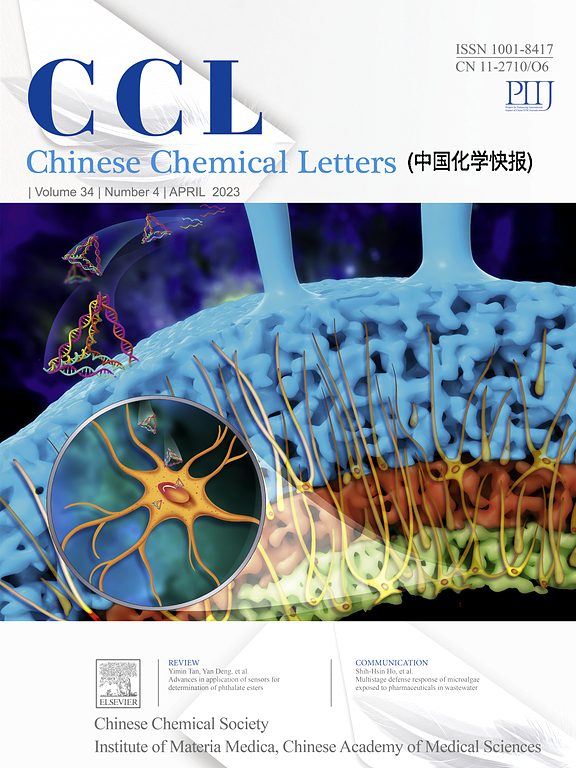Cu0/Cuδ+ site construction and its catalytic role in acetylene hydrochlorination
IF 8.9
1区 化学
Q1 CHEMISTRY, MULTIDISCIPLINARY
引用次数: 0
Abstract
In view of the dearth of active components and the unsatisfactory dispersion of Cu-based catalysts, it is imperative to undertake a detailed investigation of catalysts with enhanced catalytic performance. In order to achieve a balance between the catalytic activity and stability in the reaction process, a series of P-atom doped Cu0/Cuδ+ binary Cu-based catalysts were prepared by means of heteroatom introduction and heat treatment. The introduction of P enhanced the stability of Cu during heat treatment, thereby inhibiting the excessive agglomeration of Cu. The structure of the Cu0/Cuδ+ binary catalyst was modified through heat treatment and HCl activation, and the relationship between its structure and catalytic activity was subsequently investigated. The activation process of HCl facilitated the conversion of the Cu0 state to the Cu-Cl state and augmented the valence state of Cu. The valence modulation of the Cu site by HCl during the reaction prevented the over-reduction of the Cu site by acetylene and enhanced the stability of the catalyst. The 3Cu/5CuP/AC-800 catalyst was operated for 50 h without significant deactivation under the reaction conditions of T = 180 °C, V(HCl)/V(C2H2) = 1.15 and GHSV(C2H2) = 180 h-1. This design strategy provides a novel reference point for further studies of CuCl2 based catalysts for acetylene hydrochlorination.

Cu0/Cuδ+位点的构建及其在乙炔加氢氯化反应中的催化作用
鉴于cu基催化剂活性组分的缺乏和分散性的不理想,有必要对催化性能增强的催化剂进行详细的研究。为了在反应过程中达到催化活性和稳定性的平衡,采用杂原子引入和热处理的方法制备了一系列p原子掺杂Cu0/Cuδ+二元cu基催化剂。P的引入增强了Cu在热处理过程中的稳定性,从而抑制了Cu的过度团聚。通过热处理和HCl活化对Cu0/Cuδ+二元催化剂的结构进行了改性,并对其结构与催化活性的关系进行了研究。HCl的活化过程促进了Cu0态向Cu- cl态的转化,增强了Cu的价态。在反应过程中,HCl对Cu位点的价态调制防止了乙炔对Cu位点的过度还原,提高了催化剂的稳定性。3铜/ 5杯/ ac - 800催化剂操作50 h没有显著失活反应条件下T = 180°C、V (HCl) /(乙炔) = 1.15 GHSV(乙炔) = 180 h - 。该设计策略为进一步研究CuCl2基乙炔加氢氯化催化剂提供了新的参考点。
本文章由计算机程序翻译,如有差异,请以英文原文为准。
求助全文
约1分钟内获得全文
求助全文
来源期刊

Chinese Chemical Letters
化学-化学综合
CiteScore
14.10
自引率
15.40%
发文量
8969
审稿时长
1.6 months
期刊介绍:
Chinese Chemical Letters (CCL) (ISSN 1001-8417) was founded in July 1990. The journal publishes preliminary accounts in the whole field of chemistry, including inorganic chemistry, organic chemistry, analytical chemistry, physical chemistry, polymer chemistry, applied chemistry, etc.Chinese Chemical Letters does not accept articles previously published or scheduled to be published. To verify originality, your article may be checked by the originality detection service CrossCheck.
 求助内容:
求助内容: 应助结果提醒方式:
应助结果提醒方式:


